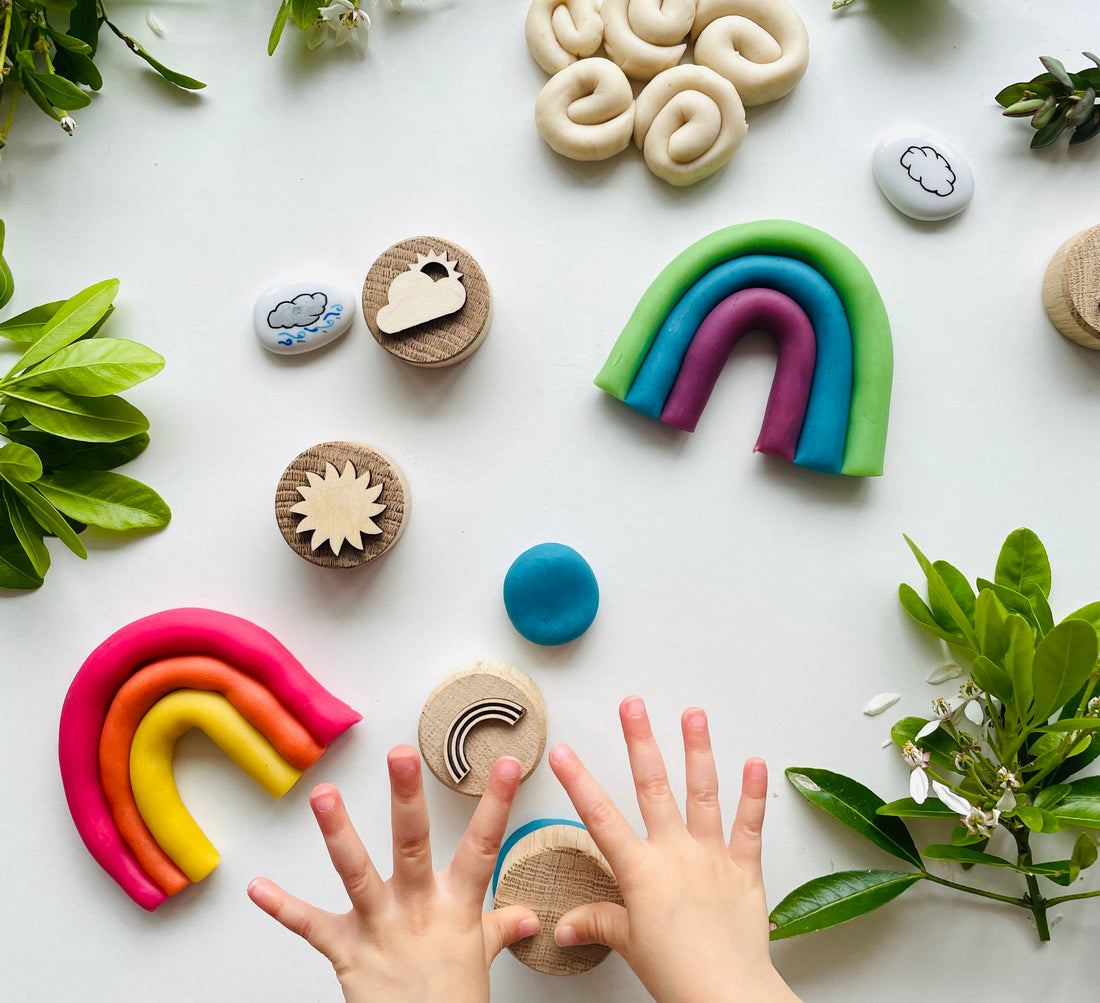Playdough and sensory play are often cherished for their ability to engage young children's senses and spark creativity. However, their benefits extend beyond just sensory exploration—they can also play a crucial role in developing early writing skills. In this blog, we'll explore how activities involving playdough and sensory play can lay the foundation for literacy and handwriting in young children.
- Fine Motor Development:
One of the fundamental building blocks of writing is the development of fine motor skills. Manipulating playdough—rolling, pinching, squishing, and shaping—requires precise hand movements and coordination. These actions help strengthen the muscles in the hands and fingers, improving dexterity and control. As children engage in sensory play with playdough, they are simultaneously honing the motor skills necessary for holding and maneuvering writing tools later on.
- Hand-Eye Coordination:
Another essential aspect of writing is hand-eye coordination, the ability to synchronize hand movements with visual input. Activities like rolling playdough into balls or flattening it with a rolling pin require children to coordinate their hand movements with what they see. This coordination is crucial for guiding a writing tool across a page and forming letters accurately. Through sensory play with playdough, children can practice and refine this coordination in a playful and enjoyable way.
- Pre-Writing Shapes and Patterns:
Playdough provides a versatile medium for exploring pre-writing shapes and patterns. Children can use their fingers or small tools to create lines, curves, circles, squares, and other geometric shapes. These activities help children become familiar with the basic strokes and formations used in writing letters and numbers. By repeatedly tracing and forming shapes in playdough, children develop muscle memory and spatial awareness, laying a strong foundation for handwriting skills.
- Sensory Engagement and Memory:
Sensory play with playdough stimulates multiple senses simultaneously, enhancing children's learning and memory retention. The tactile feedback of squishing and molding playdough, combined with the visual and kinesthetic experiences, creates rich sensory memories. When children later encounter similar movements and sensations while writing, these sensory memories can aid in the recall and reproduction of letter formations. Additionally, sensory play promotes active engagement and concentration, fostering a positive attitude towards learning.
- Language Development:
Beyond the physical aspects of writing, playdough and sensory play also support language development, another essential component of literacy. As children engage in imaginative play and storytelling with playdough creations, they naturally incorporate language, vocabulary, and narrative skills. Encouraging children to describe their creations, explain their actions, and narrate their play fosters communication skills that are foundational for later writing and literacy development.
Incorporating Playdough into Writing Activities:
- Letter Formation: Use playdough to practice forming individual letters of the alphabet, either by shaping the dough directly or by tracing letter templates.
- Sight Word Sculptures: Create playdough sculptures representing sight words or simple sentences, encouraging children to read and recreate the words with playdough.
- Story Starters: Provide playdough props and prompts to inspire storytelling and writing activities, such as creating characters, settings, or plot elements.
Playdough and sensory play offer a wealth of benefits for young children's development, including the cultivation of early writing skills. By engaging in hands-on activities with playdough, children strengthen their fine motor skills, hand-eye coordination, and pre-writing abilities, all while enjoying a multisensory learning experience. So, let's embrace the squishy, moldable magic of playdough as a tool for nurturing young writers and setting them on the path to literacy success.

